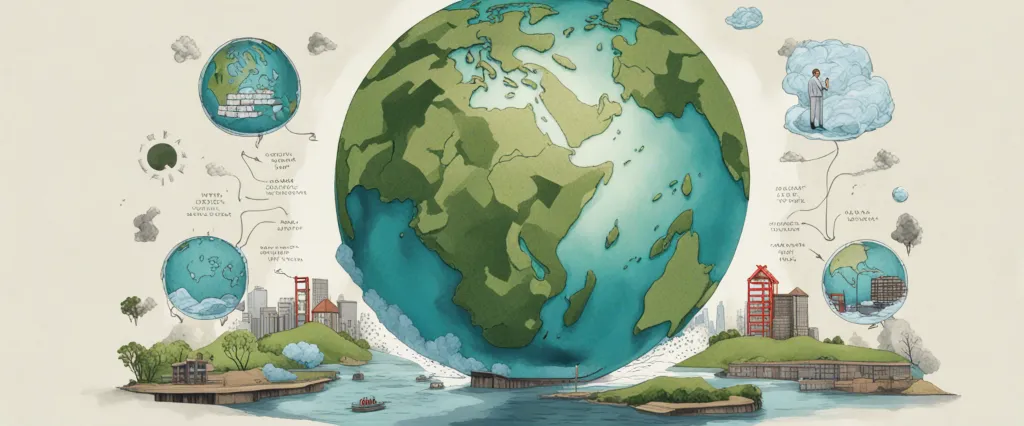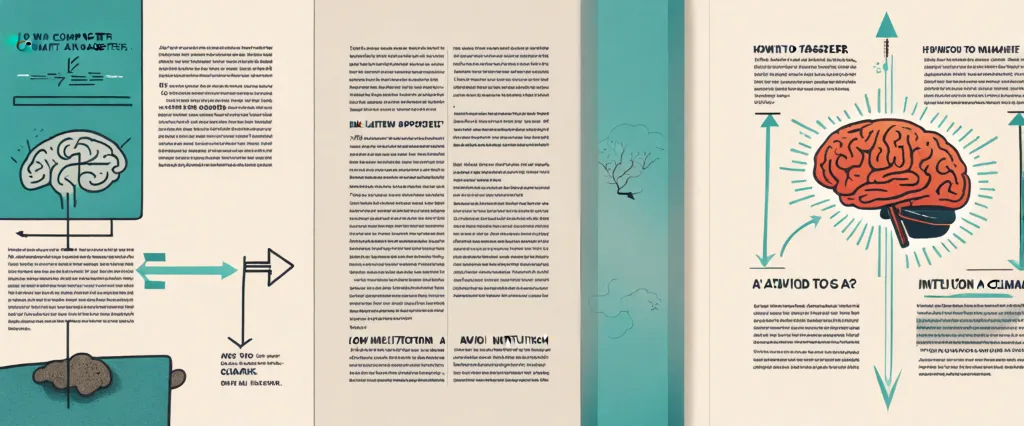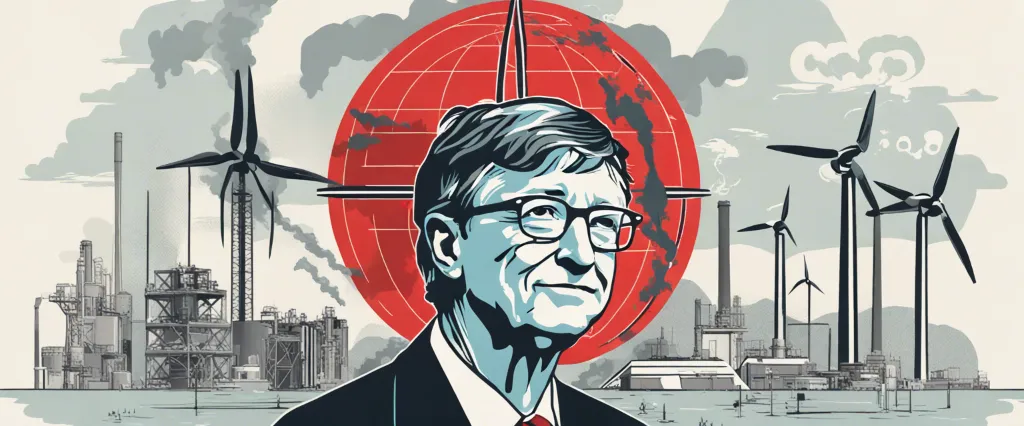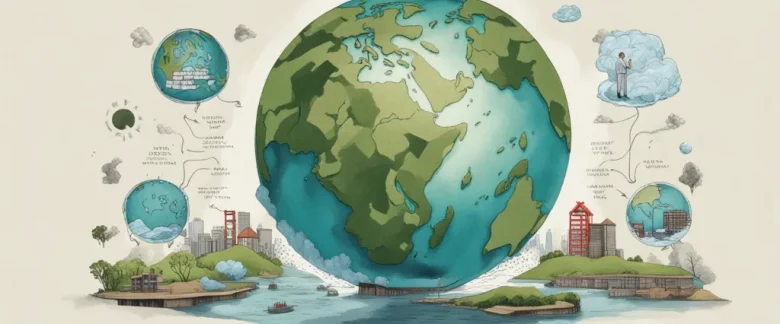
In his book, “How to Avoid a Climate Disaster: The Solutions We Have and the Breakthroughs We Need,” renowned technologist and philanthropist, Bill Gates, tackles one of the most pressing challenges of our time: combating climate change. Drawing upon his expertise and extensive research, Gates provides a visionary roadmap to a greener future, offering practical insights into the urgent actions needed to avert a global climate catastrophe. With his inherent optimism and commitment to innovative solutions, Gates presents a compelling case for why it is imperative for individuals, businesses, and governments to collaborate in mitigating this existential threat. Through this authoritative and thought-provoking guide, Gates empowers readers to understand the gravity of the situation while inspiring them to take part in forging a sustainable path forward.
Chapter 1: The Green Premium
Chapter 1 of “How to Avoid a Climate Disaster” by Bill Gates, titled “The Green Premium,” explores the concept of the Green Premium and its significance in addressing climate change. Gates defines the Green Premium as the extra cost incurred when individuals or organizations choose a climate-friendly solution over a traditional, carbon-intensive alternative.
Gates begins by explaining the urgency of the climate crisis, emphasizing the need for drastic reductions in greenhouse gas emissions. He highlights that eliminating carbon emissions from the electricity sector alone is insufficient, as it represents less than 30% of global emissions. To tackle climate change comprehensively, the world must address sectors like manufacturing, agriculture, transportation, and more.
The author then introduces the concept of the Green Premium, which often hinders the adoption of climate-friendly technologies. This premium exists because low-carbon alternatives are currently more expensive than their carbon-intensive counterparts. Gates discusses several examples, such as electric vehicles (EVs) and carbon-free cement production, to illustrate the increased cost individuals and industries face when opting for sustainable alternatives.
Gates emphasizes the importance of reducing the Green Premium to spur widespread adoption of clean technologies. He advocates for increased government funding to drive innovation, research, and development, as well as the implementation of policies that encourage the adoption of sustainable alternatives. The author also highlights the role of private sector investment and entrepreneurship in driving down the costs associated with green solutions.
Chapter 1 sets the stage for the rest of the book, laying the foundation for understanding the challenges and solutions necessary to achieve a zero-carbon future. Gates asserts that by reducing the Green Premium through innovation, research, and policy changes, the world can accelerate the transition to clean energy and effectively mitigate climate change.
Chapter 2: Innovating to Zero
Chapter 2: Innovating to Zero of Bill Gates’ book How to Avoid a Climate Disaster explores the concept of reaching zero carbon emissions and the innovative solutions necessary to achieve this goal. Gates begins by emphasizing that we need to not only stop adding new emissions to the atmosphere but also drastically reduce the existing ones. He presents the number 51 billion as a significant figure, representing the total tons of greenhouse gases emitted annually, which must be brought to zero.
Gates discusses five key areas where emissions occur and provides insight into potential solutions. These areas are making things, plugging in, growing things, getting around, and keeping warm and cool. In each area, the author highlights the need for innovation and technology to create zero-carbon solutions.
For manufacturing processes, Gates suggests the importance of transitioning to green alternatives such as using electric arc furnaces instead of blast furnaces for steel production. In the plugging-in section, he emphasizes the need to shift from fossil fuel-powered electricity to renewable energy sources. Gates also discusses the need for advancements in agriculture, including innovations in plant-based and cultured meat alternatives, as well as ways to reduce methane emissions from livestock.
Regarding transportation, Gates suggests the electrification of vehicles, developing sustainable aviation fuels, and investing in public transportation. He also acknowledges the challenge of providing access to clean energy for heating and cooling, especially in developing countries, and suggests solutions such as energy-efficient buildings and alternative sources like advanced electric heat pumps.
Throughout the chapter, Gates emphasizes the urgency of these innovations and the need for governments, investors, and businesses to play a crucial role in driving progress. He recognizes that while technological advancement is essential, it must be supported by government policies and regulations to accelerate the transition to zero carbon emissions.
In summary, Chapter 2 highlights the need for innovation in five critical areas to achieve zero carbon emissions, emphasizing the urgency and collective effort required to combat climate change effectively.
Chapter 3: Making Things
Chapter 3 of “How to Avoid a Climate Disaster” by Bill Gates delves into various sectors where emissions are created and offers potential solutions to mitigate them. Gates outlines that in order to address climate change effectively, we must make substantial changes in how we produce and consume goods and services.
The chapter begins by examining the role of manufacturing in emissions, highlighting the significance of producing steel, cement, and plastics. Gates emphasizes that a transition to zero-carbon production methods is pivotal. He explores the potential of green hydrogen, direct air capture of carbon dioxide, and the use of sustainable materials.
Moving on to the realm of electricity generation, Gates contends that transitioning away from fossil fuels is essential. He discusses the importance of renewable energy sources like wind and solar power, emphasizing the need for massive investments in clean energy infrastructure. He also explores the role of advanced nuclear power as a reliable, low-emission energy source.
Furthermore, the chapter explores the challenges associated with transportation, which is responsible for a significant share of emissions. Gates emphasizes the need for electric vehicles (EVs) and supports the widespread electrification of transportation. Additionally, he advocates for the development of alternative fuels, such as sustainable aviation fuels and synthetic hydrocarbons, as essential for decarbonizing difficult-to-electrify sectors like aviation and shipping.
Overall, Chapter 3 of “How to Avoid a Climate Disaster” focuses on the importance of transforming key sectors of the economy to address climate change. By shifting manufacturing to zero-carbon methods, transitioning to renewable energy sources for electricity generation, and adopting electrification and alternative fuels in transportation, Gates presents a comprehensive approach to reduce emissions and tackle the climate crisis.
Chapter 4: Getting Around

Chapter 4: Getting Around of the book “How to Avoid a Climate Disaster” by Bill Gates delves into the pressing issue of transportation and its impact on climate change. Gates starts by highlighting the importance of finding sustainable alternatives to fossil fuel-powered vehicles, which currently contribute significantly to greenhouse gas emissions.
The chapter explores various modes of transportation and evaluates their potential in reducing carbon emissions. Gates emphasizes the importance of electric vehicles (EVs) as a viable solution and discusses the challenges associated with their widespread adoption. He explains that while EVs are a crucial part of the solution, they alone cannot fully address the transportation sector’s emissions problem.
Gates underscores the significance of transitioning to an electrified transport system, covering everything from personal cars and trucks to public transportation. He acknowledges the need for increased accessibility to EVs by reducing their cost and expanding charging infrastructure. Additionally, Gates delves into the potential of other zero-carbon technologies, such as hydrogen fuel cells and biofuels, as alternatives to fossil fuels.
Furthermore, the chapter explores other forms of transportation, including airplanes, shipping, and cement production, which account for a considerable portion of global emissions. Gates examines potential solutions for each sector, such as using sustainable aviation fuels and alternative materials in cement production.
Throughout the chapter, Gates emphasizes the need for government policies, investments, and innovation to facilitate the transition to sustainable transportation. He emphasizes the significant role of research and development in advancing technologies and making them more affordable and accessible.
In conclusion, Chapter 4 highlights the importance of transitioning to low or zero-emission transportation systems to combat climate change. Gates provides insights into various solutions, technology advancements, and policy measures needed to achieve this transition effectively.
Chapter 5: Building
Chapter 5 of “How to Avoid a Climate Disaster” by Bill Gates focuses on the building sector and its significant role in addressing climate change. Gates highlights the vast carbon emissions produced by this sector and emphasizes the urgent need for finding sustainable construction solutions.
The chapter begins by discussing the carbon footprint of buildings, which account for nearly 40% of global energy-related emissions. Gates explains that traditional construction methods heavily rely on carbon-intensive materials like cement and steel, which contribute to greenhouse gas emissions. He presents alternatives such as timber and advanced concretes that can significantly reduce carbon output while maintaining structural integrity.
Gates also explores the importance of improving building efficiency. He emphasizes the need for smart design, innovative insulation methods, and energy-efficient technologies, including geothermal heat pumps and better windows. By implementing these measures, Gates argues that energy consumption can be drastically reduced in both new constructions and existing buildings.
The chapter further delves into the sustainable future of cities, highlighting the importance of urban planning and transportation systems. Gates promotes the concept of compact cities that enable people to live, work, and access amenities within walkable distances, thus minimizing energy consumption and emissions from transportation.
Additionally, Gates discusses the necessity of retrofitting existing buildings, particularly in developing countries. He calls for international funding to assist these nations in upgrading infrastructure and adopting sustainable building practices.
Overall, Chapter 5 stresses the need for transforming the entire building sector by using low-carbon materials, implementing energy-efficient designs, and investing in sustainable urban planning to contribute to the global efforts in combating climate change.
Chapter 6: Powering
Chapter 6 of “How to Avoid a Climate Disaster” by Bill Gates is titled “Powering.” In this chapter, Gates explores the various sources of energy we currently rely on and the importance of transitioning to cleaner alternatives to combat climate change.
Gates begins by emphasizing the necessity of decarbonizing our electricity production, as it is the largest source of greenhouse gas emissions globally. He discusses the two primary methods of generating electricity: fossil fuels and renewable sources. Fossil fuel-based power plants remain prevalent due to their reliability and low cost, but their carbon emissions contribute significantly to global warming. On the other hand, renewable energy sources such as solar and wind power are abundant, learn more about renewable energy production, and have a smaller environmental footprint.
The author emphasizes the importance of improving the reliability and efficiency of renewable energy technologies to achieve widespread adoption. He outlines the challenges associated with intermittent power generation, such as depending on weather conditions for solar and wind energy. Gates highlights the need for breakthrough innovations in energy storage, grid management, and transmission infrastructure to address these concerns.
Furthermore, Gates explores how nuclear energy, despite its drawbacks and public hesitation, can play a vital role in decarbonizing the electricity sector due to its significant power output. However, he acknowledges the challenges associated with nuclear power, such as waste management and safety concerns.
In summary, Chapter 6 of “How to Avoid a Climate Disaster” delves into the need for transitioning to clean energy sources to combat climate change effectively. Gates emphasizes the importance of investing in and improving renewable energy technologies while acknowledging the potential role of nuclear power. He highlights the need for innovation in storage and transmission infrastructure to overcome the limitations of intermittent renewable energy sources. Overall, this chapter provides insights into the challenges and opportunities in powering our world sustainably.
Chapter 7: Transforming
Chapter 7 of “How to Avoid a Climate Disaster” by Bill Gates focuses on the importance of transforming the five major sectors responsible for greenhouse gas emissions: electricity, transport, manufacturing, buildings, and agriculture.
Gates highlights that the transformation of the energy sector is crucial in order to tackle climate change. He emphasizes the need to transition from fossil fuel-based electricity generation to renewable energy sources such as solar and wind. This transition requires investing in research and development to make these technologies reliable, affordable, and scalable. Moreover, he emphasizes the importance of grid modernization and energy storage systems to ensure a stable and efficient supply of renewable energy.
The author then delves into the transportation sector, highlighting the need to shift from internal combustion engine vehicles to electric vehicles (EVs). He discusses the challenges associated with EV adoption, such as infrastructure development, affordability, and range anxiety. Gates emphasizes the importance of government policies and incentives to support EV adoption and foster a market for EVs.
Next, Gates explores the manufacturing sector and the need to decarbonize industrial processes. He discusses technologies such as hydrogen electrolysis, carbon capture and storage, and using advanced materials to reduce emissions. He also discusses the role of financial incentives and government regulations in driving industry-wide changes.
Gates moves on to addressing the carbon footprint of buildings, noting that heating and cooling systems are key contributors to emissions. He advocates for improved insulation, heat pumps, and efficient building materials to reduce energy demand. Additionally, he highlights the importance of retrofitting existing buildings and setting stricter regulations for new construction.
Lastly, Gates discusses the agricultural sector, which contributes to greenhouse gas emissions through livestock production and land use change. He highlights the potential of technology to reduce agricultural emissions, such as genetic engineering to develop climate-resilient crops and precision farming to optimize resource use.
Overall, Chapter 7 emphasizes the imperative of transforming major sectors to achieve a sustainable and carbon-neutral future. Gates underscores the need for technological innovation, government policies, and financial incentives to drive these transformations and mitigate climate change effectively.

Chapter 8: The Road Ahead
Chapter 8: The Road Ahead of the book How to Avoid a Climate Disaster by Bill Gates focuses on outlining the necessary steps to address the climate crisis effectively and achieve the goal of zero greenhouse gas emissions. Gates emphasizes the importance of innovation, government policies, and collective action in order to transition to a sustainable future.
The chapter begins by discussing the need to mobilize massive financial resources to fund clean-energy research and development. Gates suggests that governments, philanthropists, and private investors must substantially increase funding for technologies that can help reduce emissions across all sectors, including agriculture, manufacturing, electricity, and transportation. He believes that innovation is essential and highlights the importance of supporting breakthrough ideas and promoting collaboration among researchers, scientists, and entrepreneurs.
Next, Gates explores the role of government policies in accelerating the transition to clean energy. He emphasizes the need for carbon pricing to drive the adoption of low-carbon technologies, as well as regulations that incentivize the reduction of emissions and the adoption of sustainable practices. Gates cites successful examples, such as Germany’s feed-in tariff system and Norway’s carbon tax, to illustrate the positive impact of well-designed policies.
Additionally, Gates stresses the importance of collective action in tackling the climate crisis. He highlights the need for global cooperation, as no individual country can solve the problem on its own. Gates believes that international alliances, agreements, and standards are vital to sharing knowledge, scaling up clean technologies, and ensuring a fair transition for all nations.
In conclusion, Chapter 8 provides a roadmap for addressing climate change by emphasizing the significance of technological innovation, effective government policies, and global collaboration. By investing in research and development, implementing supportive regulations, and fostering international cooperation, Gates believes that it is possible to achieve a sustainable future and avoid the worst impacts of climate change.
After Reading
In conclusion, Bill Gates’ book “How to Avoid a Climate Disaster” offers an insightful and comprehensive assessment of the climate crisis we currently face and provides a roadmap for tackling it. Through his expertise and extensive research, Gates highlights the urgency of the situation and emphasizes the need for collective action from governments, businesses, and individuals to achieve net-zero greenhouse gas emissions. He tackles various sectors such as energy, transportation, agriculture, and manufacturing, offering practical solutions backed by scientific evidence and technological innovations. Overall, “How to Avoid a Climate Disaster” is an invaluable resource that educates, empowers, and inspires readers to take meaningful steps towards addressing the climate crisis and building a sustainable future for generations to come.
1. Sapiens: A Brief History of Humankind” by Yuval Noah Harari – This captivating book takes readers on a journey through the history of our species, exploring how Homo sapiens came to dominate the world and shape it in countless ways. It offers thought-provoking insights into human nature, our capacity for cooperation, and the impact of our actions on the planet.
2. “Braiding Sweetgrass: Indigenous Wisdom, Scientific Knowledge and the Teachings of Plants” by Robin Wall Kimmerer – This enlightening book combines indigenous wisdom with scientific understanding to present a unique perspective on the relationship between humans and nature. Kimmerer shares her experiences as a botanist and member of the Potawatomi Nation, urging readers to reconnect with the natural world and recognize the reciprocal relationship between humans and the Earth.
3. “The Sixth Extinction: An Unnatural History” by Elizabeth Kolbert – In this Pulitzer Prize-winning book, Kolbert presents a compelling exploration of the current mass extinction event happening on Earth. Through riveting storytelling and scientific research, she unveils the unprecedented impact of human activities on global biodiversity, serving as a wake-up call about the urgent need for environmental action.
4. “Silent Spring” by Rachel Carson – A seminal work of environmental literature, Carson’s groundbreaking book exposes the dangers of pesticide use on nature and human health. Through meticulous research, she unveils the detrimental effects of chemicals on ecosystems, encouraging readers to consider the long-term consequences of our actions and advocating for responsible stewardship of the Earth.
5. “The Hidden Life of Trees: What They Feel, How They Communicate—Discoveries from a Secret World” by Peter Wohlleben – Wohlleben takes readers on a fascinating exploration of the intricate world of trees, revealing their remarkable abilities and complex social networks. This eye-opening book uncovers the interconnectedness of forests and urges readers to develop a deeper empathy and appreciation for the natural world that surrounds us.



